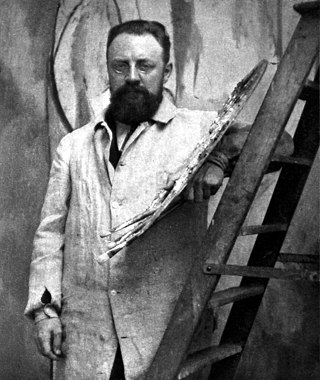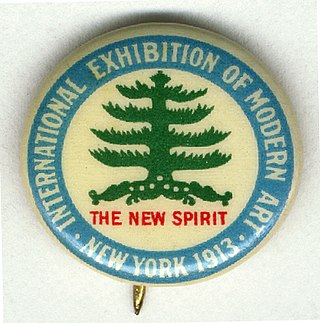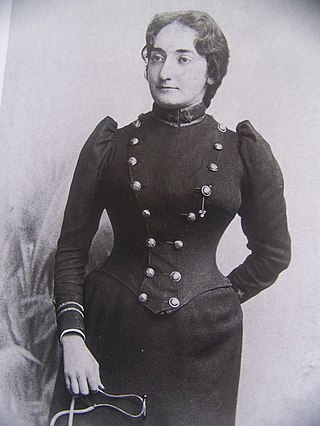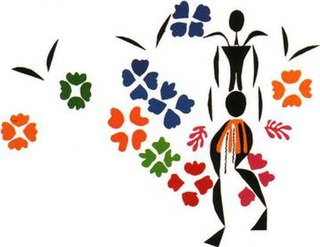Related Research Articles

Henri Émile Benoît Matisse was a French visual artist, known for both his use of colour and his fluid and original draughtsmanship. He was a draughtsman, printmaker, and sculptor, but is known primarily as a painter. Matisse is commonly regarded, along with Pablo Picasso, as one of the artists who best helped to define the revolutionary developments in the visual arts throughout the opening decades of the twentieth century, responsible for significant developments in painting and sculpture.

The 1913 Armory Show, also known as the International Exhibition of Modern Art, was organized by the Association of American Painters and Sculptors. It was the first large exhibition of modern art in America, as well as one of the many exhibitions that have been held in the vast spaces of U.S. National Guard armories.

TheBarnes Foundation is an art collection and educational institution promoting the appreciation of art and horticulture. Originally in Merion, the art collection moved in 2012 to a new building on Benjamin Franklin Parkway in Philadelphia, Pennsylvania. The arboretum of the Barnes Foundation remains in Merion, where it has been proposed that it be maintained under a long-term educational affiliation agreement with Saint Joseph's University.
Events from the year 1923 in art.

Albert Marquet was a French painter, associated with the Fauvist movement. He initially became one of the Fauve painters and a lifelong friend of Henri Matisse. Marquet subsequently painted in a more naturalistic style, primarily landscapes, but also several portraits and, between 1910 and 1914, several female nude paintings.
Events from the year 1952 in art.

Paul Rosenberg was a French art dealer. He represented Pablo Picasso, Georges Braque and Henri Matisse. Both Paul and his brother Léonce Rosenberg were among the world's major dealers of modern art.

Dance (La Danse) is a painting made by Henri Matisse in 1910, at the request of Russian businessman and art collector Sergei Shchukin, who bequeathed the large decorative panel to the Hermitage Museum, in Saint Petersburg. The composition of dancing figures is commonly recognized as "a key point of (Matisse's) career and in the development of modern painting". A preliminary version of the work, sketched by Matisse in 1909 as a study for the work, resides at MoMA in New York, where it has been labeled Dance (I).

Claribel Cone (1864–1929) and Etta Cone (1870–1949), collectively known as the Cone sisters, were active as American art collectors, world travelers, and socialites during the first part of the 20th century. Claribel trained as a physician and Etta as a pianist. Their social circle included Henri Matisse, Pablo Picasso and Gertrude Stein. They gathered one of the best known private collections of modern art in the United States at their Baltimore apartments, and the collection now makes up a wing of the Baltimore Museum of Art. Their collection was estimated to be worth almost a billion US dollars in 2002.

The Blue Nudes is a series of collages, and related color lithographs, by Henri Matisse, made from paper cut-outs depicting nude figures in various positions. Restricted by his physical condition after his surgery for stomach cancer, Matisse began creating art by cutting and painting sheets of paper by hand; these Matisse viewed as independent artworks in their own right. The Blue Nudes refers also to the editioned multiples based on the cut-outs. Matisse supervised the creation of these lithographs until his death in 1954.

Odalisque With Raised Arms is a painting by Henri Matisse, completed in 1923. The oil on canvas measuring 23 by 26 inches is held in the National Gallery of Art, in Washington D.C.. Matisse's style changed and evolved drastically throughout his career, including his wide and varying collection of paintings depicting female nudes. His odalisque paintings were inspired by his trip to Morocco. Many of the female subjects in the Odalisque paintings were modeled after Matisse's main model at the time, Henriette Darricarrère.

La Négresse (1952–53) by Henri Matisse is a gouache découpée, made of cut pieces of colored paper.

Paul Matisse is an artist and inventor known for his public art installations, many of which are interactive and produce sound. Matisse also invented the Kalliroscope.

Grande Odalisque, also known as Une Odalisque or La Grande Odalisque, is an oil painting of 1814 by Jean-Auguste-Dominique Ingres depicting an odalisque, or concubine. Ingres' contemporaries considered the work to signify Ingres' break from Neoclassicism, indicating a shift toward exotic Romanticism.

Fauvism is a style of painting and an art movement that emerged in France at the beginning of the 20th century. It was the style of les Fauves, a group of modern artists whose works emphasized painterly qualities and strong colour over the representational or realistic values retained by Impressionism. While Fauvism as a style began around 1904 and continued beyond 1910, the movement as such lasted only a few years, 1905–1908, and had three exhibitions. The leaders of the movement were André Derain and Henri Matisse.

Jacqueline Marval was the pseudonym for Marie Josephine Vallet, who was a French painter, lithographer and sculptor.

Les Femmes d'Alger is a series of 15 paintings and numerous drawings by the Spanish artist Pablo Picasso. The series, created in 1954–1955, was inspired by Eugène Delacroix's 1834 painting The Women of Algiers in their Apartment. The series is one of several painted by Picasso in tribute to artists that he admired.

Caracas Museum of Contemporary Art is a museum of modern art located in the Parque Central Complex in Caracas, Venezuela. It was founded on 30 August 1973 by the journalist and art patron Sofía Ímber, also its director from 1973 to her dismissal in the Chavist cultural revolution of 2001. It opened in 1974 and was the first museum in Venezuela to offer a specialist art library, a formal children's and adults' learning area, a special education department for the blind, and a multimedia arts centre.
Bathers by a River, also known as Bathers at the River and occasionally referred to as simply Bathers, is a large 1917 oil-on-canvas painting by French artist Henri Matisse. Matisse began painting the canvas in 1909 and finished the painting in the fall of 1917, making it one of three pictures he painted during the Battle of Verdun.
References
- ↑ "Nude on a Yellow Sofa". the-athenaeum.org. The Athenaeum. October 24, 2014. Retrieved September 1, 2017.
- ↑ "Nude on a Yellow Sofa". gallery.ca. National Gallery of Canada. Retrieved September 1, 2017.
- ↑ "Yellow Odalisque". philamuseum.org. Philadelphia Museum of Art. Retrieved September 1, 2017.